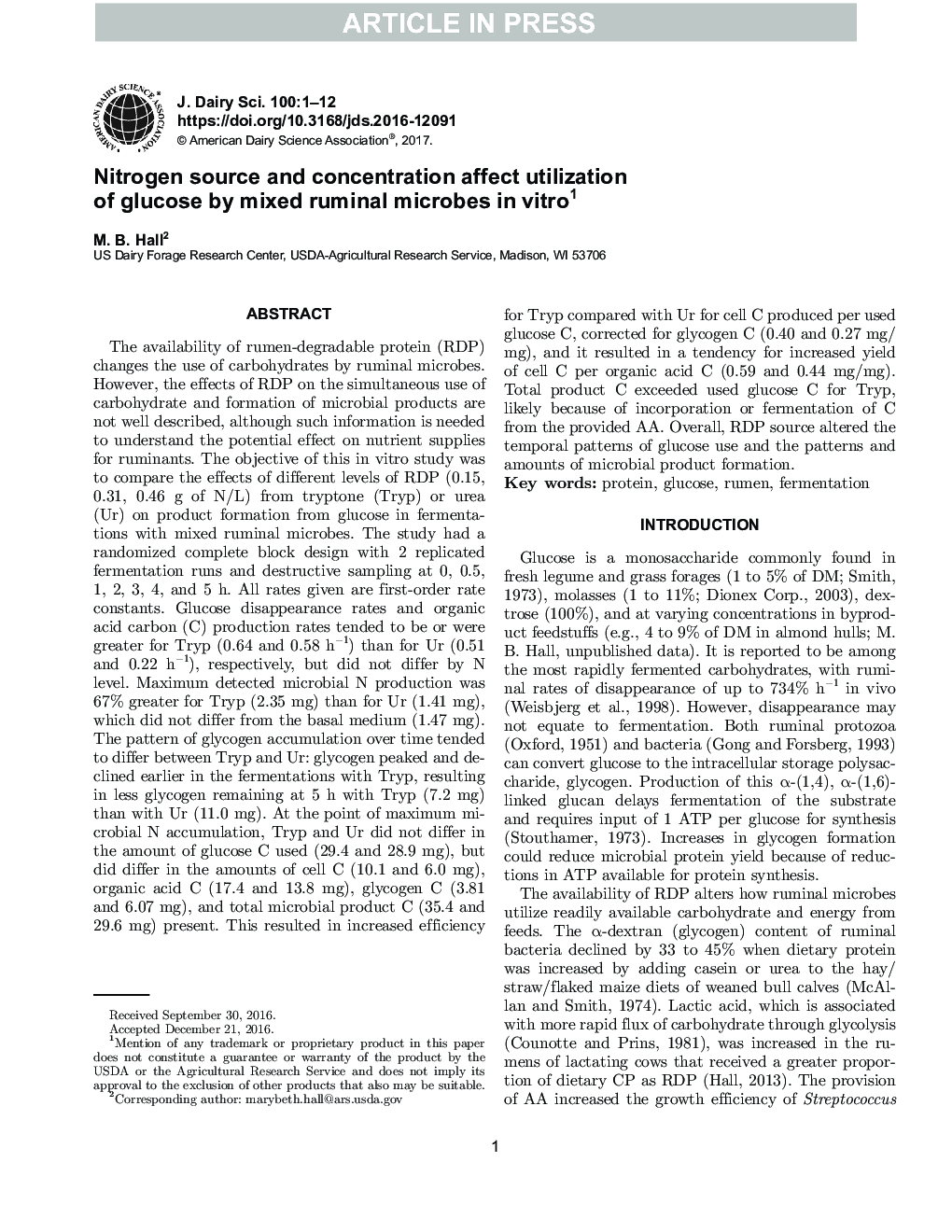| کد مقاله | کد نشریه | سال انتشار | مقاله انگلیسی | نسخه تمام متن |
|---|---|---|---|---|
| 5542332 | 1402517 | 2017 | 12 صفحه PDF | دانلود رایگان |
عنوان انگلیسی مقاله ISI
Nitrogen source and concentration affect utilization of glucose by mixed ruminal microbes in vitro
ترجمه فارسی عنوان
منبع نیتروژن و غلظت آن بر میزان استفاده از گلوکز توسط میکروب های مخلوط شوری در آزمایشگاه تاثیر می گذارد
دانلود مقاله + سفارش ترجمه
دانلود مقاله ISI انگلیسی
رایگان برای ایرانیان
کلمات کلیدی
پروتئین، گلوکز، شکمبه تخمیر
موضوعات مرتبط
علوم زیستی و بیوفناوری
علوم کشاورزی و بیولوژیک
علوم دامی و جانورشناسی
چکیده انگلیسی
The availability of rumen-degradable protein (RDP) changes the use of carbohydrates by ruminal microbes. However, the effects of RDP on the simultaneous use of carbohydrate and formation of microbial products are not well described, although such information is needed to understand the potential effect on nutrient supplies for ruminants. The objective of this in vitro study was to compare the effects of different levels of RDP (0.15, 0.31, 0.46 g of N/L) from tryptone (Tryp) or urea (Ur) on product formation from glucose in fermentations with mixed ruminal microbes. The study had a randomized complete block design with 2 replicated fermentation runs and destructive sampling at 0, 0.5, 1, 2, 3, 4, and 5 h. All rates given are first-order rate constants. Glucose disappearance rates and organic acid carbon (C) production rates tended to be or were greater for Tryp (0.64 and 0.58 hâ1) than for Ur (0.51 and 0.22 hâ1), respectively, but did not differ by N level. Maximum detected microbial N production was 67% greater for Tryp (2.35 mg) than for Ur (1.41 mg), which did not differ from the basal medium (1.47 mg). The pattern of glycogen accumulation over time tended to differ between Tryp and Ur: glycogen peaked and declined earlier in the fermentations with Tryp, resulting in less glycogen remaining at 5 h with Tryp (7.2 mg) than with Ur (11.0 mg). At the point of maximum microbial N accumulation, Tryp and Ur did not differ in the amount of glucose C used (29.4 and 28.9 mg), but did differ in the amounts of cell C (10.1 and 6.0 mg), organic acid C (17.4 and 13.8 mg), glycogen C (3.81 and 6.07 mg), and total microbial product C (35.4 and 29.6 mg) present. This resulted in increased efficiency for Tryp compared with Ur for cell C produced per used glucose C, corrected for glycogen C (0.40 and 0.27 mg/mg), and it resulted in a tendency for increased yield of cell C per organic acid C (0.59 and 0.44 mg/mg). Total product C exceeded used glucose C for Tryp, likely because of incorporation or fermentation of C from the provided AA. Overall, RDP source altered the temporal patterns of glucose use and the patterns and amounts of microbial product formation.
ناشر
Database: Elsevier - ScienceDirect (ساینس دایرکت)
Journal: Journal of Dairy Science - Volume 100, Issue 4, April 2017, Pages 2739-2750
Journal: Journal of Dairy Science - Volume 100, Issue 4, April 2017, Pages 2739-2750
نویسندگان
M.B. Hall,
